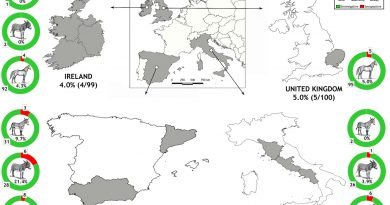Stepping up from wildlife disease surveillance to integrated wildlife monitoring in Europe
Research in Veterinary Science
Abstract
In a context of disease emergence and faced with the ever-growing evidence of the role of wildlife in the epidemiology of transmissible diseases, efforts have been made to develop wildlife disease surveillance (WDS) programs throughout Europe. Disease monitoring is ideally composed of «numerator data» (number of infected individuals) and «denominator data» (size of the target population). Too often however, information is available for only one. Hence, there is a need for developing integrated and harmonized disease and population monitoring tools for wildlife: integrated wildlife monitoring (IWM). IWM should have three components. Passive disease surveillance improves the likelihood of early detection of emerging diseases, while active surveillance and population monitoring are required to assess epidemiological dynamics, freedom of disease, and the outcome of interventions. Here, we review the characteristics of ongoing WDS in Europe, observe how pathogens have been ranked, and note a need for ranking host species, too. Then, we list the challenges for WDS and draw a roadmap for stepping up from WDS to IWM. There is a need to integrate and maintain an equilibrium between the three components of IWM, improve data collection and accessibility, and guarantee the adaptability of these schemes to each epidemiological context and temporal period. Methodological harmonization and centralization of information at a European level would increase efficiency of national programs and improve the follow-up of eventual interventions. The ideal IWM would integrate capacities from different stakeholder; allow to rapidly incorporate relevant new knowledge; and rely on stable capacities and funding.




